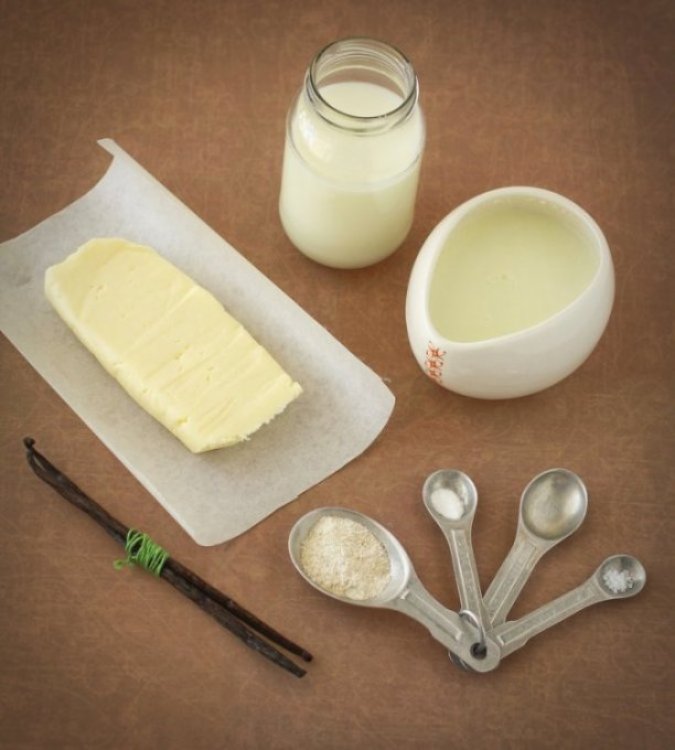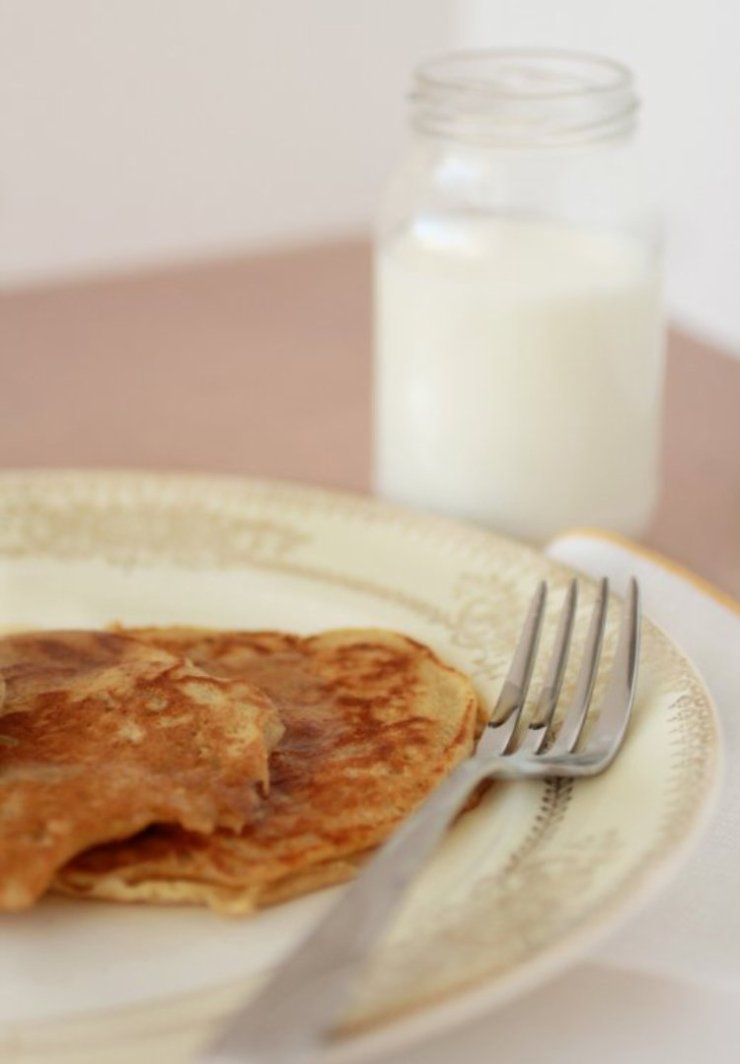
Reasons I consider this recipe healthy: I used homemade buttermilk of which I extracted from store bought cream. Ideally I would eventually like to make it from raw cream, however, I haven't quite yet figured out where to get my hands on some fresh cream. If you are interested making your own butter and buttermilk from store bought crem, you may want to check out this tutorial. Also, this recipe cuts down on the refined flour by using half whole-wheat flour and half all-purpose flour (using only whole-wheat flour would make a really heavy dense pancake). For the whole-wheat flour, I used freshly ground flour that I milled in my new L'Equip 760105 VitalMill Grain Mill
that Santa Claus brought me this year. Lastly, I used 100% pure maple syrup which is healthier than maple flavored syrup. Maple flavored syrup contains common sweeteners like corn syrup and sucrose which have had all their nutrition processed out of them, but maple syrup's health benefits are all there.

This recipe is also a great way for using up your food storage such as powdered milk instead of fresh milk, dried apples instead of fresh apples, or powdered eggs instead of fresh eggs. For the measurements on using powdered milk, refer to this handy conversion chart from the All About Food Storage Blog.

Whole-Wheat Apple Pancakes
1 medium apple, diced
3/4 cup all-purpose flour
3/4 cup freshly ground whole-wheat flour
2 teaspoons baking powder
1/2 teaspoon baking soda
1/4 teaspoon salt
1 cup freshly made buttermilk (or store bought low-fat buttermilk)
2 1/4 tablespoons dry non-instant powdered milk with 3/4 cup of water with liquid
ingredients (or 3/4 cup of milk)
2 tablespoons powdered egg with 1/3 cup water with liquid ingredients (or 2 eggs)
1 tablespoon honey
6 tablespoons pure maple syrup
1 tablespoon vanilla extract
1. In a large bowl, sift the dry ingredients. In a soft bowl, whisk the wet ingredients. Slowly add the wet to the dry ingredients and half of the apple. Stir until just combined.
2. Heat a large nonstick griddle or skillet over medium heat. Either spray griddle or skillet with PAM or grease with fresh unsalted butter. Spoon 1/4 cup batter onto the griddle for each pancake and sprinkle each with remaining apple. Cook until the tops are bubbly and edges are dry, about 2 minutes. Flip and cook until golden brown.
3. Place 2 pancakes on each plate and drizzle with syrup.
Source: Adapted from Food Network Magazine, November 2009.






















































